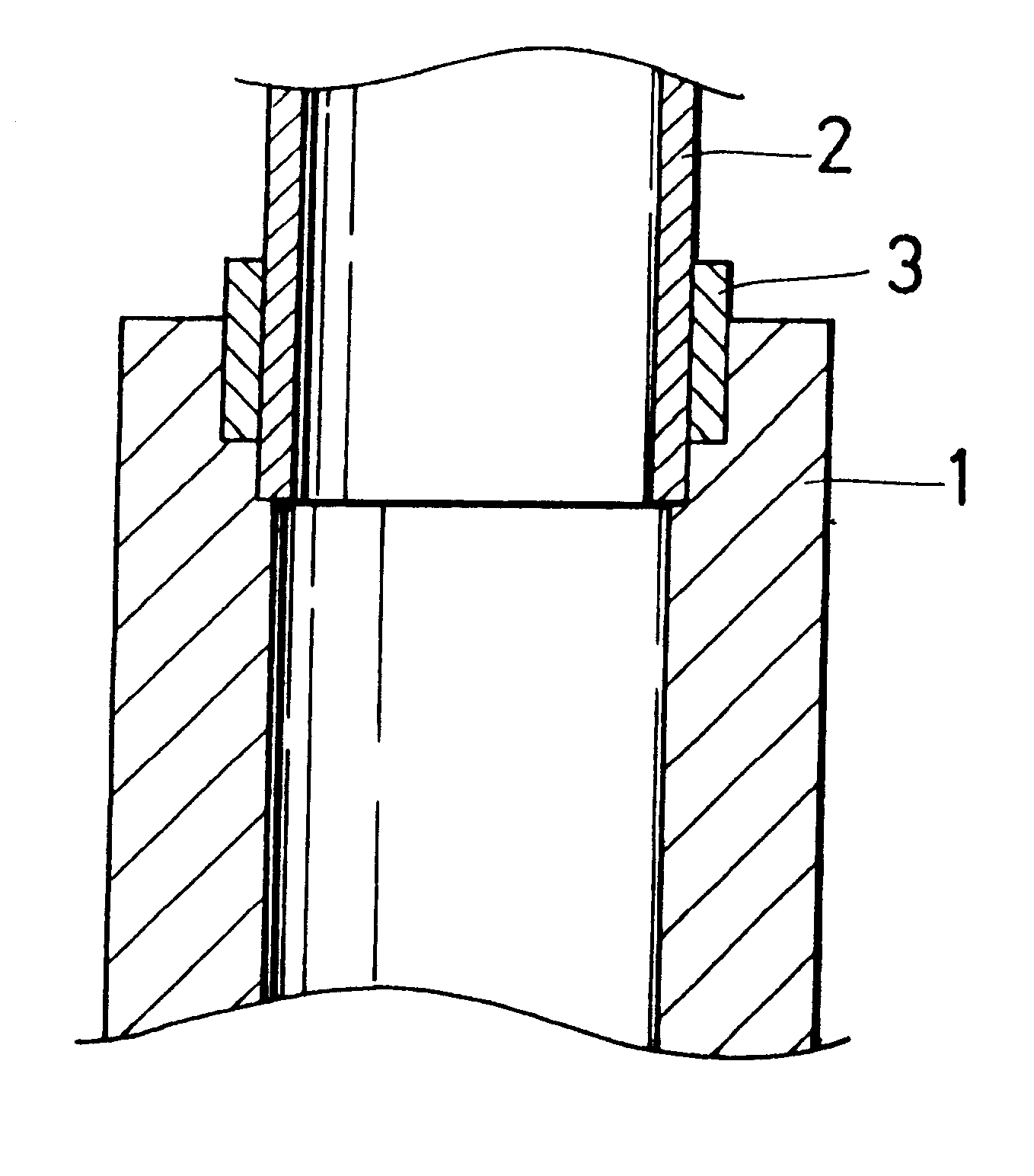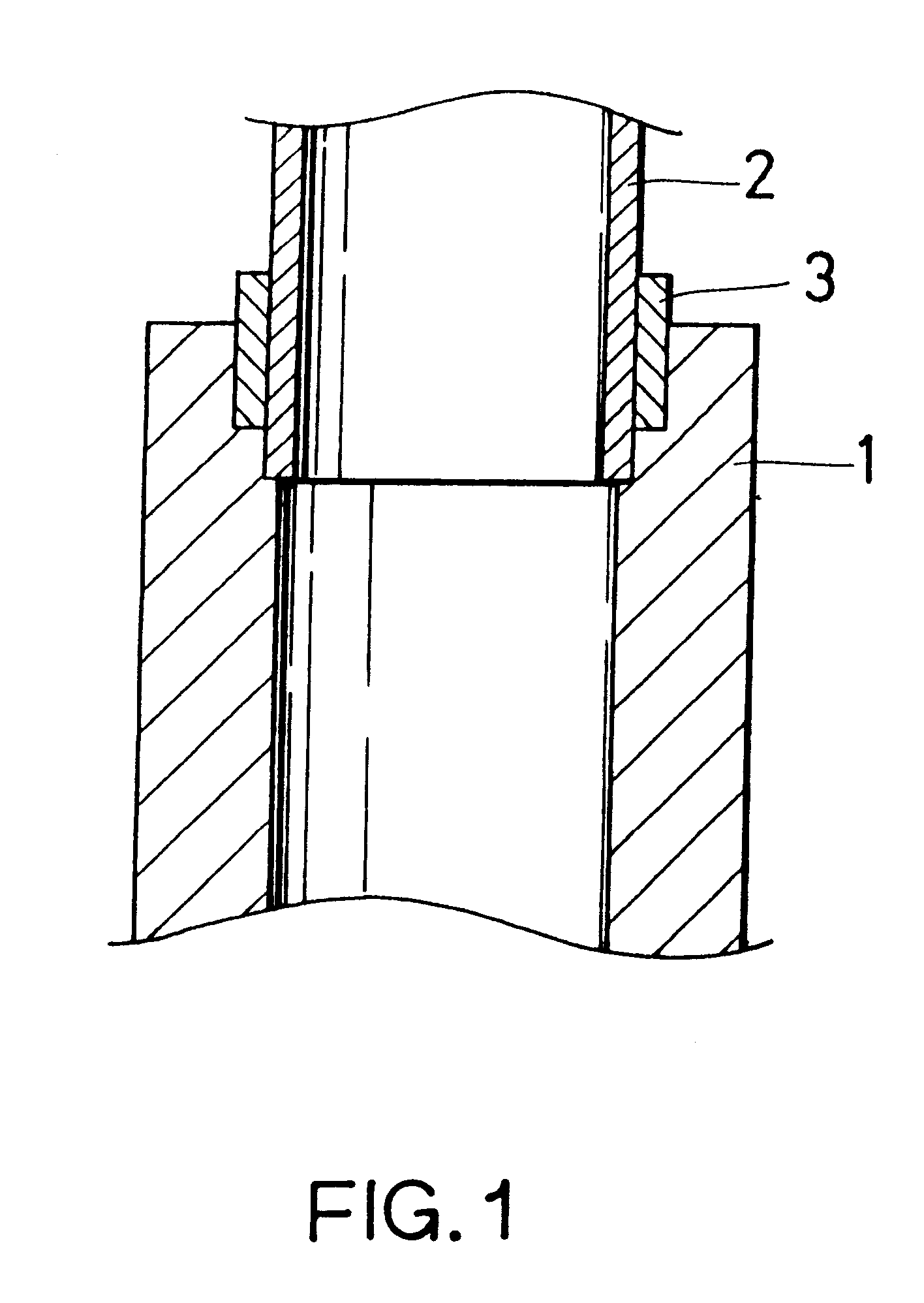Aluminum brazing alloy for cold brazing and method for brazing low-melting aluminum material
a technology of cold brazing and aluminum material, which is applied in the direction of manufacturing tools, non-electric welding apparatus, and solvents. it can solve the problems of poor brazing ability, inability to use the brazing alloy in flux brazing, and excessive melting of the brazing alloy
- Summary
- Abstract
- Description
- Claims
- Application Information
AI Technical Summary
Benefits of technology
Problems solved by technology
Method used
Image
Examples
Embodiment Construction
Embodiments of the aluminum brazing alloy for cold brazing and the brazing method according to the present invention will be described.
Aluminum brazing alloys respectively having compositions specified in Table 1 given below were prepared. On the other hand, a pipe material 1, constructed of a cast material or a die-cast material, with a larger diameter section provided on the internal circumference of one end section thereof and an extruded pipe 2 made of JIS A6063, as shown in FIG. 1, were provided as base metals for a brazing test. The pipe material 1 was made of JIS ADC10 for Examples 1 to 3 and Comparative Example 10 and JIS AC4C for Examples 4 to 8 and Comparative Example 9.
Brazing was conducted as shown in FIG. 1. Specifically, the lower end section of the extruded pipe 2 was fitted into the larger diameter section provided in the upper end of the pipe material 1 to assemble a lap joint. A brazing alloy 3, which had been formed into a ring, was put on the upper end of the lar...
PUM
| Property | Measurement | Unit |
|---|---|---|
| Percent by mass | aaaaa | aaaaa |
| Percent by mass | aaaaa | aaaaa |
| Percent by mass | aaaaa | aaaaa |
Abstract
Description
Claims
Application Information
 Login to View More
Login to View More - R&D
- Intellectual Property
- Life Sciences
- Materials
- Tech Scout
- Unparalleled Data Quality
- Higher Quality Content
- 60% Fewer Hallucinations
Browse by: Latest US Patents, China's latest patents, Technical Efficacy Thesaurus, Application Domain, Technology Topic, Popular Technical Reports.
© 2025 PatSnap. All rights reserved.Legal|Privacy policy|Modern Slavery Act Transparency Statement|Sitemap|About US| Contact US: help@patsnap.com


